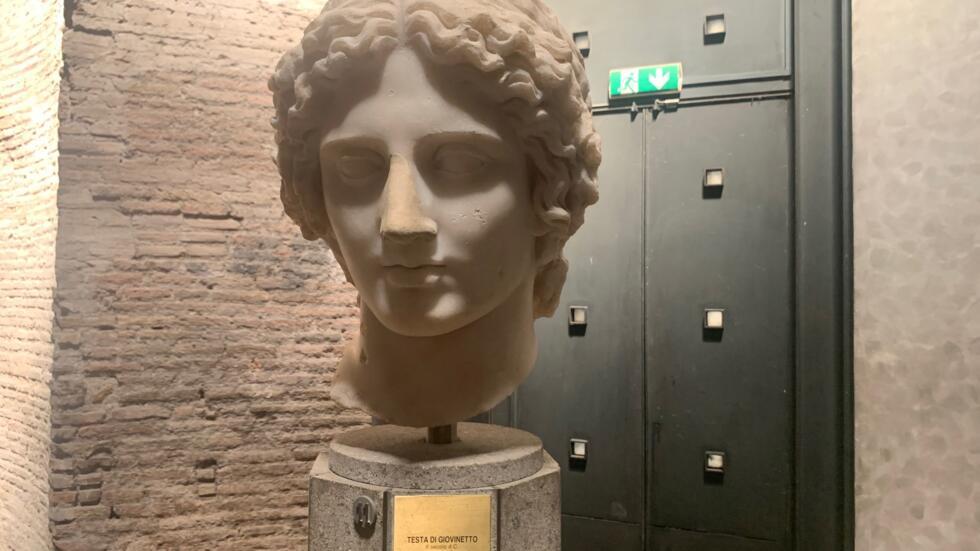Stolen Italian treasures regain their glory in museum for rescued art
Italian treasures illegally taken out of the country have found a new home at the Museum of Rescued Art in Rome.
Issued on:

The first rotating exhibition, which will last until 15 October, opened this month in the Planetarium Hall in the Roman National Museum’s Baths of Diocletian.
On display are around 100 valuable artefacts which were returned after having been looted by tomb raiders.
The stolen art was recovered by the Italian police squad charged with safeguarding the country’s artistic and cultural heritage.
Many of the ancient artefacts on show have never been seen before in Italy.
Through multiple investigations by the Rome Public Prosecutor’s Office, the Carabineri art squad examined photographic documentation regarding antiquities collections at museums, private collectors, auction houses and antiques galleries in the United States.
They found an array of items resulting from illegal excavations, fencing and wrongful export, stolen by people habitually engaged in illicitly trafficking cultural heritage.
In December 2021, Italy’s Carabinieri art squad announced the recovery of around 260 priceless artefacts from between the 7th and 3rd centuries BC, thanks to their lengthy investigations, diplomacy and collaboration with authorities in the US.
It had taken Italian authorities more than two decades of negotiations and trials to obtain the return of the looted art.

Historical value
The Carabinieri Unit for the Protection of Cultural Heritage was established in 1969 and has so far recovered more than 3 million cultural goods.
It has also seized more than 1.3 million fake works of art.
Roberto Riccardi, who commands the unit, said that some of the artefacts that they decided to showcase in the museum are valuable both financially and historically.
“They were taken with illegal excavations in different areas of Italy. We are talking about Etruscan findings or Apulian findings or goods from Campania or from the Roman civilization”, he said.
“We don’t know piece by piece the specific locations from where they were taken, but we know the areas. They will go back to the places of origin," he added.
The museum's director, Stephane Verger, said that the collection would be expanded to include art and archaeology that have been rescued from disasters such as earthquakes or wars.
A museum is born
Riccardi said the idea of a museum emerged when the finds were presented to Dario Franceschini, Italy's Minister of Culture.
It was agreed that exhibiting the works in a dedicated temporary space was better than allowing them to languish in deposits where they would be kept from the public gaze before they were returned to where they originally belonged.
Franceschini lamented the departure from Italian territory of the artistic and archaeological pieces as a significant loss to the country's cultural heritage.
"The protection and promotion of these treasures are both an institutional duty and a moral commitment," he said.
"They are a responsibility that must be taken on for future generations.”
Daily newsletterReceive essential international news every morning
Subscribe